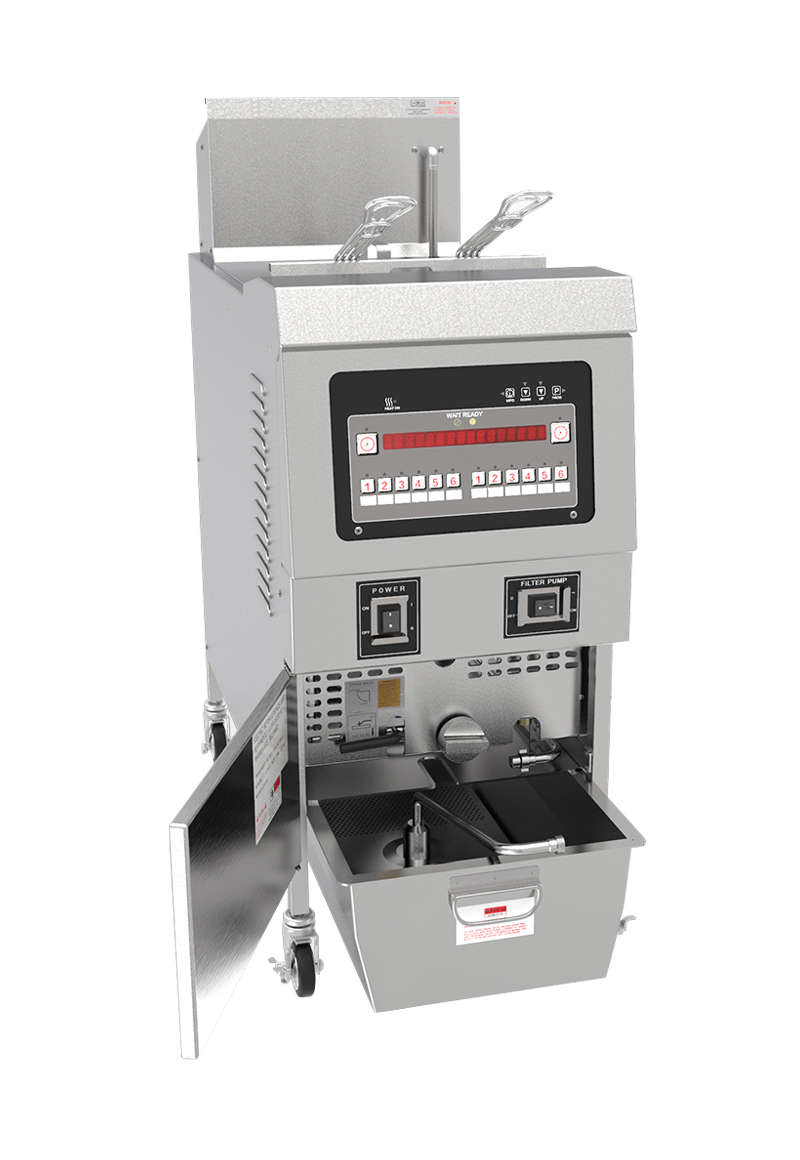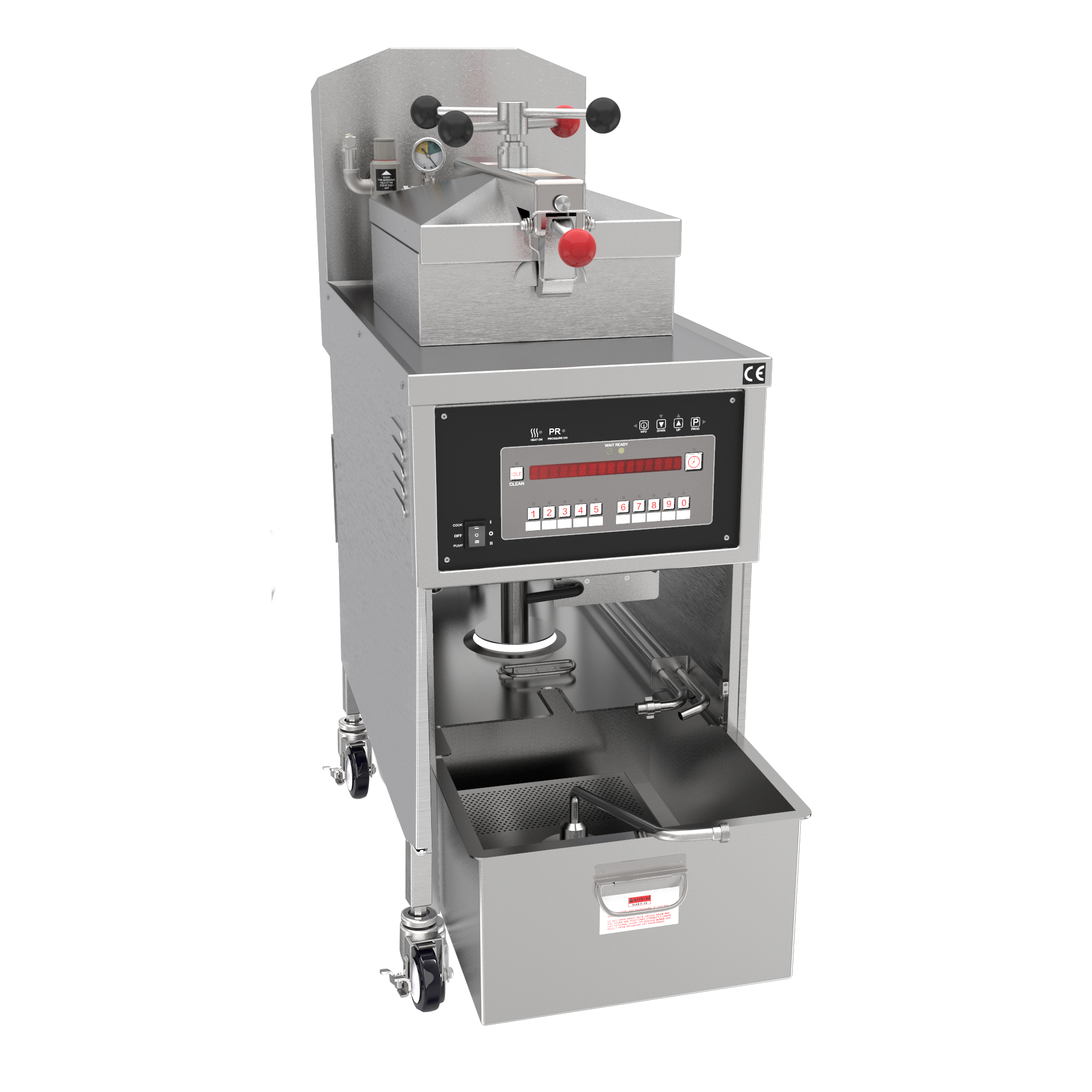Frying remains one of the most popular cooking methods in commercial kitchens around the world. Whether you're serving fried chicken, seafood, French fries, or onion rings, having the right fryer can make a big difference in taste, consistency, and efficiency. But with so many options available, how do you choose between a pressure fryer and an open fryer?
At Minewe, we specialize in professional-grade kitchen equipment and are here to help you make the right investment for your business. Let’s take a closer look at the key differences between these two essential types of fryers.
1. Cooking Method
Open Fryer:
An open fryer cooks food by submerging it in hot oil under normal atmospheric pressure. It is ideal for items like French fries, chicken wings, mozzarella sticks, and other foods that need to be crispy all around.
Pressure Fryer:
A pressure fryer uses a sealed chamber to cook food in oil under pressure. This method reduces cooking time and oil absorption while locking in moisture—perfect for large pieces of meat like fried chicken.
√ Best For: Tender, juicy chicken with crispy skin.
2. Flavor and Texture
Open Fryer:
Delivers a crunchy, golden-brown exterior with full exposure to hot oil. However, foods can sometimes dry out if overcooked.
Pressure Fryer:
Produces a juicy interior with a thinner, less crispy coating. This method enhances flavor retention and moisture, making it ideal for meat-heavy menus.
3. Cooking Speed and Efficiency
Pressure Fryer:
Because of the high pressure, cooking times are significantly shorter. This means higher throughput during busy service hours.
Open Fryer:
Slower than pressure fryers but still efficient, especially when cooking small batches or side dishes.
4. Oil Consumption and Cleanliness
Open Fryer:
Requires regular oil filtration and cleaning. More exposure to air and food particles can reduce oil life if not maintained properly.
Pressure Fryer:
Less oil degradation due to the sealed cooking environment. However, pressure fryers often require more thorough cleaning and safety checks.
MJG's open fryer and pressure fryer are built-in filtration.
5. Maintenance and Operation
Open Fryer:
Simple to use, easier to clean, and ideal for kitchens with varied frying needs.
Pressure Fryer:
Requires more training to operate safely. Built-in safety mechanisms, like lid locks and pressure regulators, must be regularly inspected.
6. Cost Consideration
Open Fryers are typically more affordable and versatile, while pressure fryers involve a higher upfront cost but deliver better yield for meat-focused menus.
So, Which Fryer Is Right for You?
-
If your business specializes in fried chicken, a pressure fryer may be your best choice for fast, flavorful results.
-
If you offer a diverse menu of snacks, sides, and lighter items, an open fryer will give you the flexibility and ease of use you need.
Need Expert Advice? We’re Here to Help
At Minewe, we offer a wide range of open fryers and pressure fryers, along with full after-sales support and customization options. Whether you're upgrading your existing setup or opening a new restaurant, our team can help you choose the fryer that matches your menu, workflow, and kitchen layout.


Post time: Jun-19-2025
